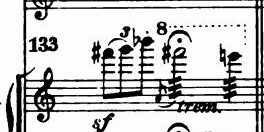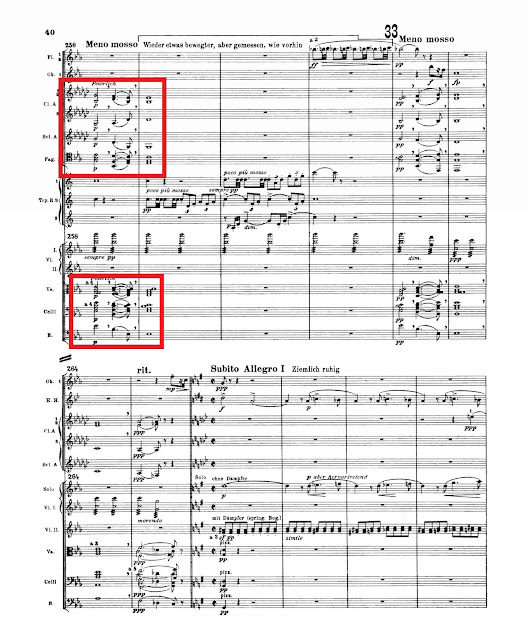DCCCI. MAHLER, Gustav (1860-1911)
Symphony #7 (1904-05)
1. Langsam -- Allegro risoluto, ma non troppo
2. Nachtmusik I
3. Scherzo
4. Nachtmusik II
5. Rondo Finale
NDR Elbphilharmonie Orchestra
Alan Gilbert, cond.
(1:29:52)
Although he was just beginning to receive appreciation for his composing, Mahler had a steady conducting gig, and was still composing his symphonies during the summer months at his retreat at Maiernigg.
He spent the summers of '04-'05 revising the Sixth and working on the Seventh.
1. Langsam -- Allegro risoluto, ma non troppo
Under an insistent, stuttering B Minor pulse, the Tenorhorn (much confusion: the Tenorhorn is pitched in E-Flat, while Mahler specifies the instrument in B-Flat, more like the baritone horn) belts out this melody:
Moving to E Minor, the horns pronounce the main theme, accompanied by the same jittery motif, but in the violins ...
The second theme is introduced in the violins -- typical heartache Mahler with fermata holds to increase tension, accompanied by rolling arpeggios in the celli:
Though of course Mahler never intended it to be a literal interpretation, he compared his intentions with the feeling of this Rembrandt painting.
Two horns call-and-response; the second horn muted ... the ensuing "bird-call" triplets and trills in the woodwinds evoke an eerie feeling ...
Another painting which illustrates Mahler's musical intentions:
Like many of Mahler's large-scale works, here he reduces the gigantic orchestra to a chamber music ensemble. A solo violin introduces a gentle melody on the clarinet and oboe:
The timpani introduce a fanfare-like figure which is repeated in the winds and horns:
Nevertheless, the last two bars are marvelously exciting, with the brass holding a C Augmented chord resolving to pure C Major:









,_The_Nightmare,_1781.jpg)















No comments:
Post a Comment